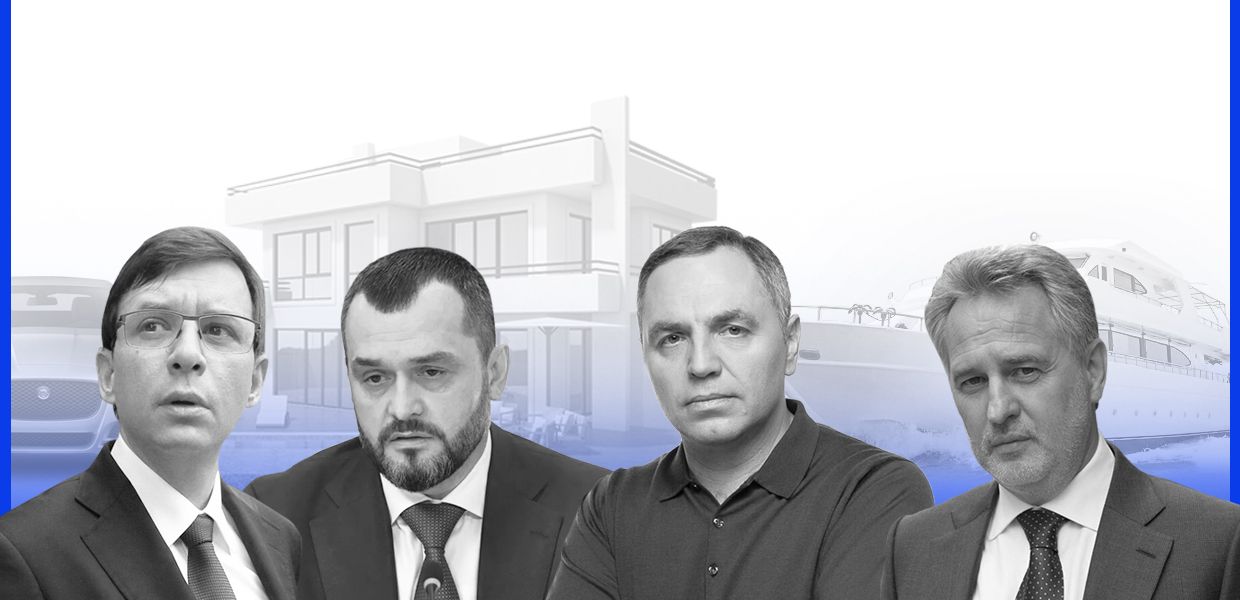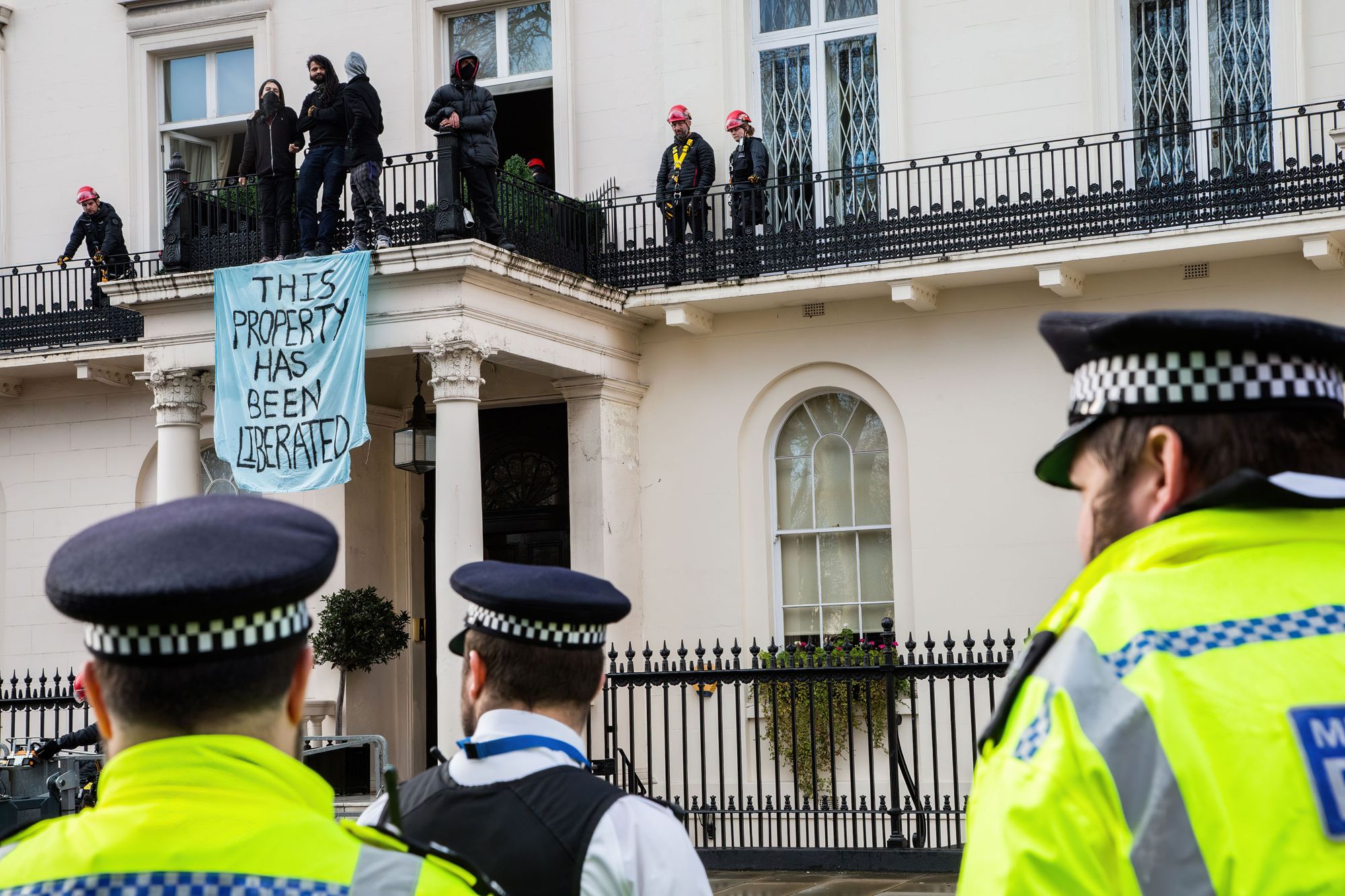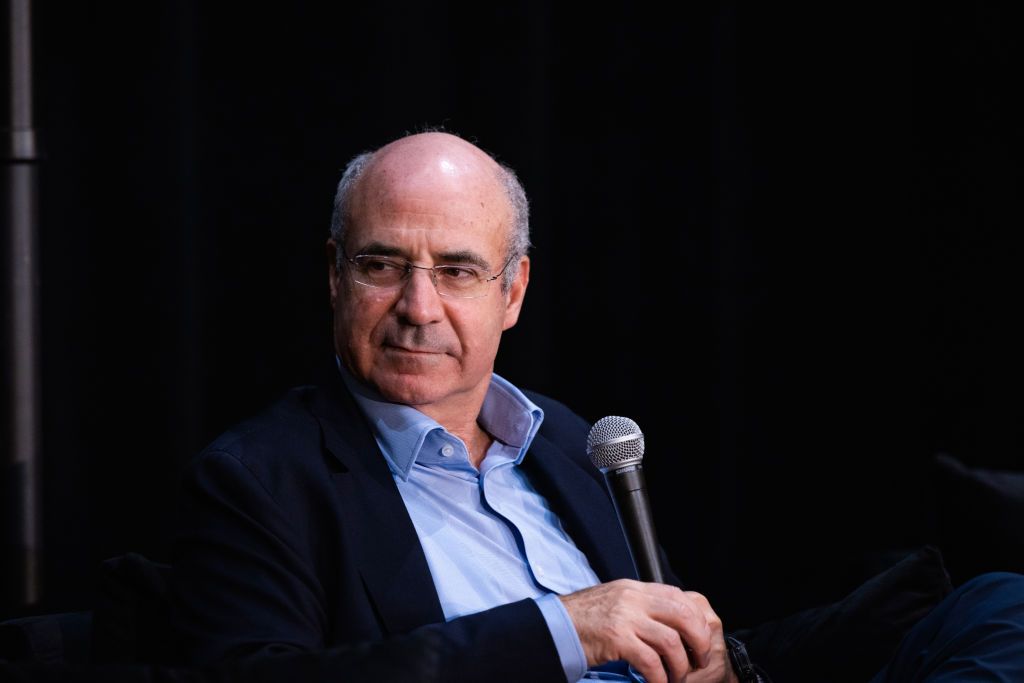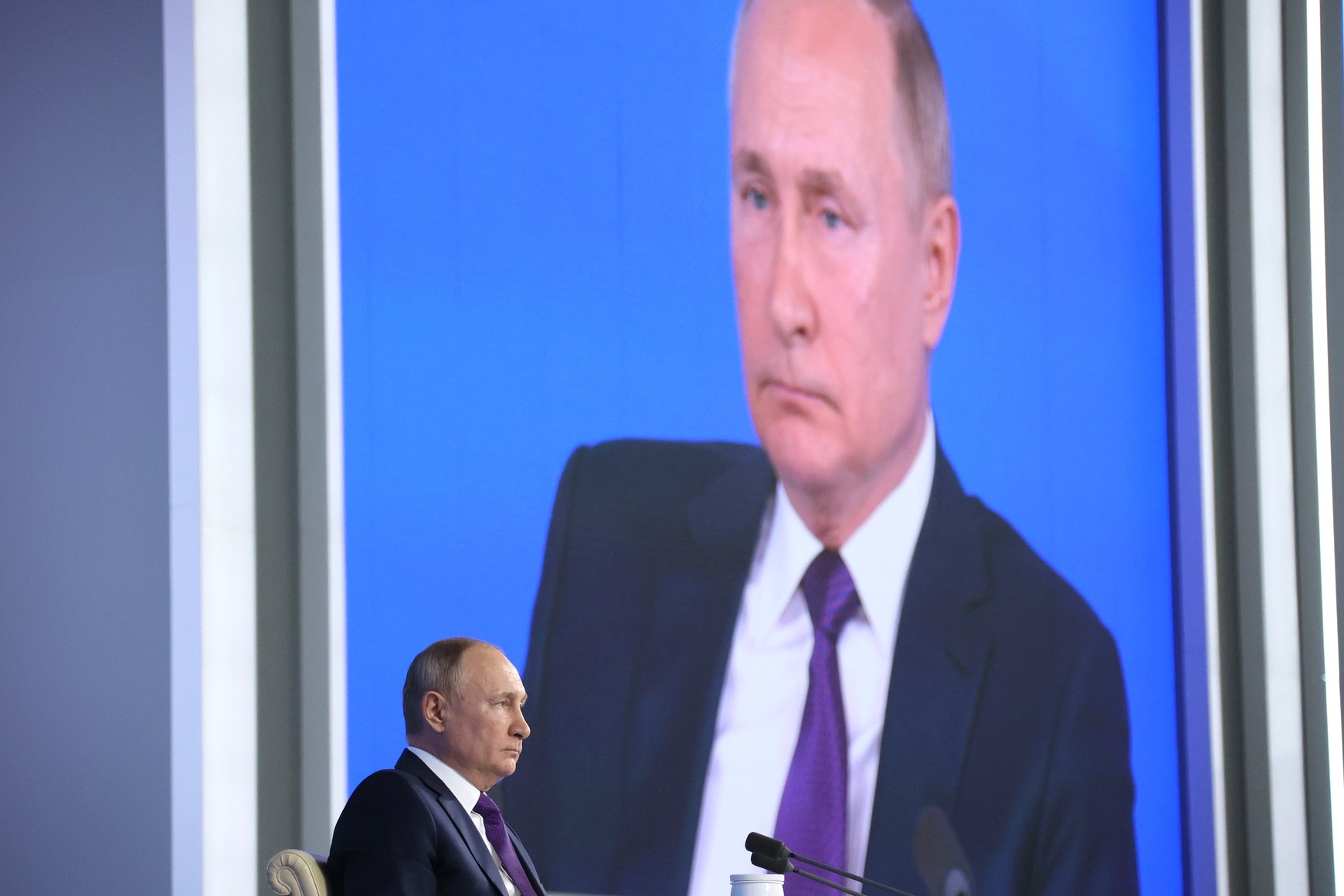That diamond ring? It may have helped pay for Russia’s war

Editor’s note: This story uses sources who are speaking on condition of anonymity since revealing their identities would heavily damage their careers and expose them to legal and personal risks in the diamond industry. Their identities are known to the Kyiv Independent.
Top findings:
- Despite the US sanctions, Russia’s primary diamond producer, Alrosa, keeps selling to the West, using intermediaries in third countries
- Alrosa even managed to boost its sales in 2023. Some of the profit could have been spent on direct support for the Russian military
- Big brands like Tiffany and Cartier may mislead their clients by claiming they don’t buy Russian diamonds, something they cannot guarantee, and thus make them unwitting supporters of the Russian war effort
- The biggest diamond companies in the world teamed up to allegedly jeopardize the authorities' attempts to close sanctions loopholes
Soon after Russia launched its full-scale invasion of Ukraine, luxury brands like Tiffany and Cartier announced they had stopped buying Russian diamonds.
An investigation by the Kyiv Independent has found evidence to the contrary.
A year and a half into the all-out war, export data shows Russia keeps selling its diamonds to the West. Now, through intermediaries, primarily Dubai.
Thanks to weak American sanctions and the absence of any in the European Union, Alrosa, the leading Russian diamond producer partly owned by the state, keeps profiting from diamond sales. The company may be using some of its profit to fund the Russian military directly. Alrosa has not responded to a request for comment.
Clients of jewelry brands like Tiffany and Cartier have no idea the money they spend on diamonds may contribute to Russia's war. Tiffany denied the allegations, while Cartier has not answered the Kyiv Independent’s information request.
Meanwhile, Group of Seven’s (G7) latest efforts to finally restrict Russian diamond sales have come up against an intense lobbying campaign orchestrated by the biggest diamond companies in the world since summer 2022.
From mine to finger
The journey of a diamond is long. It can change hands a dozen times before ending up on a ring or bracelet, making its origin nearly impossible to track.
When taken from the ground, diamonds are known as “rough.” These diamonds are certified under the Kimberley Process, which was introduced in 2000 to stop the trade in diamonds fueling rebel movements.
Before the Kimberley Process, so-called “blood diamonds” mined by armed groups in countries experiencing civil war, like Cote d’Ivoire, Sierra Leone, and the Democratic Republic of Congo, freely entered the market.
Only diamonds that fund rebel groups are covered by the Kimberley Process, which makes the process powerless against the diamonds funding Russian aggression.
Under the process, all shipments of rough diamonds must be accompanied by a certificate indicating a country of origin.

Rough diamonds are then polished, transformed into shapes familiar to consumers, like the ubiquitous “brilliant cut,” and sold to intermediaries and jewelers.
Smaller stones under one carat are sold in “parcels” — mixed bags of many diamonds, which are not sorted by origin but by size and quality. Two industry insiders told the Kyiv Independent that, at this stage, it becomes almost impossible to track diamond origin.
Three diamond experts interviewed by the Kyiv Independent called Dubai the “laundromat” for the industry: a major hub for mixing stones where companies introduce Russian ones into “mixed origin” parcels.
In short, there are two ways to mask the origin of a diamond.
First, a company polishes a diamond in the Indian city of Surat, after which it is no longer considered “Russian” under U.S. law. Ninety percent of all rough diamonds in the world are reportedly polished in Surat.
The second – and more common way, according to two industry insiders – is for rough diamonds to be mixed in parcels in Dubai and later sold to polishers as “mixed” goods.
Thus, Russian diamonds polished in a third country are not considered “Russian” anymore, while Russian diamonds sold in mixed packages are impossible to trace back to their country of origin.
Two industry insiders say that currently, luxury brands cannot guarantee that they are not selling Russian diamonds, a pledge many of them have made to their customers.
The numbers don’t add up
The biggest consumer of diamonds, the United States, introduced policies to stop buying from the world’s biggest producer, Russia, following its full-scale invasion of Ukraine.
The U.S., which accounts for 55% of global diamond demand, importing more than the rest of the world combined, imposed import restrictions on Russian diamonds in March 2022 and sanctioned Alrosa one month later.
But the profits from sales of Russian state-run diamond producer Alrosa didn’t decrease – in fact, they grew.
Alrosa reported stronger revenues from sales in 2023 than in 2022 and 2021. The export data shows the company progressively shifted sales from Antwerp, Belgium, through which 80% of all diamonds pass at least once, to the murkier hub of Dubai.

As major Western retailers publicly shunned Russian diamonds and “self-sanctioned,” Russian exports to Belgium collapsed by 92%, according to the Kimberley Process data available to diamond companies, shared with the Kyiv Independent.
Russian diamond exports dipped in late 2022 but quickly recovered to pre-invasion levels as Russia found new routes for exporting the precious stones.
Since the full-scale invasion, UAE imports have grown 2.5 times, replacing the EU as the number one importer of Russian rough diamonds, according to Kimberley Process data.

Thirty-seven percent of Russian rough diamond shipments since the start of the Russian all-out war against Ukraine went directly to Dubai, according to bill of lading data that covers shipments up to Feb. 28, 2023, according to the data from Import Genius, a U.S.-based trade data aggregator. This is an almost threefold increase compared to pre-invasion years. Between 2017-2022, an average of 14% of Russian shipments went to Dubai.
Russia shifted its diamond trade to Dubai to avoid stronger regulations in Antwerp.
All companies operating in Antwerp must comply with strict EU anti-money laundering regulations, as well as customs controls and auditing requirements, according to a 2021 report written by leading diamond trade expert Hans Merket for IPIS, an independent Antwerp-based research institute.
According to Merket’s report, Dubai attracted “mixing practices that serve to mask mining origin.” His opinion is shared by three other Kyiv Independent industry sources who called Dubai the diamond “laundromat.”
As such, Dubai has proven the perfect gateway for sellers trying to hide the origin of Russian diamonds and bypass US restrictions.
The stable exports and Alrosa profits prove the American sanctions did not work.
“Major companies claim they have cut Russian diamonds from their supply chain,” said an industry source, “but the numbers just don’t add up.”
Someone is lying
Western luxury companies don’t buy rough diamonds straight from Alrosa. They rely on companies that buy “mixed origin” diamonds in Dubai. According to two industry insiders, it is an open secret that this includes Russian diamonds.
Big brands like Cartier and Tiffany’s only work with a small number of trusted suppliers, said an industry insider. According to him, the “trusted few” simply do not have enough supply to satiate luxury brands without finding a backchannel for Russian diamonds.
Those intermediaries who sell to luxury brands directly purchase “mixed origin” diamonds from other companies. Over 400 companies, primarily based in Belgium, the UAE, and India, have purchased Russian rough diamonds since the full-scale invasion, according to Import Genius data.

Diamonds purchased by Cartier have a disclaimer, seen by the Kyiv Independent on internal documents: “The seller hereby guarantees that these diamonds have not been cut from rough diamonds originating from Russia.” Other major luxury brands use similar language.
According to two industry insiders interviewed by the Kyiv Independent, the luxury brands know the numbers don’t add up and are happy to turn a blind eye.
One example of where it shows is the production of the smallest diamonds, widely used in jewelry.
One watch by Cartier, retailing at $255,000, is “set with 598 brilliant-cut diamonds totaling 10.67 carats,” according to the seller.
These tiny diamonds are called “stars” and “mélées.” According to estimates by different industry insiders, from 70% to 80% of such diamonds are mined in Russia.

This means the luxury brands using “star” sized diamonds in their pieces can have an idea of where these diamonds most likely came from.
An industry insider told the Kyiv Independent that he knows a buyer who sources Russian diamonds and sells them to the Louis Vuitton Moet Hennesy (LVMH) group – which owns Tiffany – as mixed stones, falsely certifying that no Russian diamonds are present.
In response to the Kyiv Independent’s request for comment, LVMH denied selling any Russian diamonds and said that Tiffany tracks the provenance of all stones above 0.18 carats and audits its sellers to ensure sellers can segregate Russian diamonds from their production. The company, however, didn't clearly say how it ensures that the smaller diamonds they use don't originate from Russia.
Two industry sources told the Kyiv Independent that auditors for luxury companies are worried about losing their business by revealing supply chain issues.
Out of a dozen major intermediaries contacted by the Kyiv Independent that, according to industry insiders, sell diamonds to brands like Tiffany and Cartier, only one commented on their sourcing practices: Taché.
Taché is one of Antwerp’s bigger players: Belgian company data shows it recorded the tenth-largest revenue of any Belgian diamond company in 2021.
A Taché employee who did not provide their name said the company’s luxury clients require them to guarantee they are not selling Russian diamonds. Yet, Import Genius data shows that their supply chain is far from clean.
Taché bought at least $13 million worth of Russian diamonds since the start of the full-scale invasion, according to data provided by Import Genius. But the last sale took place in April 2022, after which the company stopped buying Russian diamonds.

As late as June 2023, Taché also bought polished diamonds from Shree Ramkrishna Exports (SRK), which, three months later, in September 2023, Ukraine’s anti-corruption agency designated as a “sponsor of war” for buying Russian diamonds. According to Import Genius data, SRK has bought at least $143 million in Russian diamonds since the start of the full-scale invasion.
Taché also bought extensively from Kiran Gems, a company that has bought almost $100 million in Russian diamonds since the full-scale invasion, according to Import Genius data. In November 2022, Taché received a 72-carat shipment from Kiran - a parcel of many stones.
In a statement responding to allegations by Ukraine’s anti-corruption agency, SRK said they were “unjustly” targeted by the country’s officials but did not deny buying Russian diamonds.
Sponsor of war
Alrosa is not just the world’s largest diamond producer – it mines over 90% of Russian diamonds – but also a big supporter of the country’s war against Ukraine.
Alrosa mines diamonds in Russia’s vast northern region of Siberia. Russia’s federal government holds a third of the company, the regional government holds another third, and the last third is sold to private parties on the stock market.
Alrosa is headquartered in the city of Mirny, over 4,000 kilometers east of Moscow. Mirny means “peaceful” in Russian, yet Alrosa directly backs the Russian army.
Besides sponsoring the war by paying profits and taxes to the Russian state, in 1997, the company paid for repairs and gave its name to a military submarine. Since then, the diamond company has consistently contributed to its upkeep.

In the summer of 2022, the Russian navy upgraded the Alrosa submarine, which is part of Russia’s Black Sea Fleet, to carry Kalibr missiles. Kalibr missiles have been widely used against Ukrainian cities, killing civilians.
Curbing Russian diamonds flood
In May 2023, the G7 announced plans to ban Russian diamonds, setting the scene for a pitched battle between different actors in the diamond industry.
According to IPIS expert Merket, there are two major competing plans: one ensures everything remains as it is, while the other one introduces some restrictions.
The latter is by Belgium, which advocates for a proposal they claim is the only way to get Russian diamonds off the market.
The different plan is by the World Diamond Council (WDC), a major industry group, which told the Kyiv Independent that their plan represents most diamond companies.

Under the Belgian plan, mixed parcels – the main pathway for small Russian diamonds to Western markets – would be completely banned. For larger diamonds, Belgium proposes a comprehensive ledger for stones to be tracked “from mine to consumers” with the help of blockchain technology.
The WDC proposal requires all companies to provide a warranty: “The rough and/or polished diamonds herein invoiced do not originate from … Russia.”
Luxury brands already require such assurances and audits, as LVMH told the Kyiv Independent. Yet, as the export data shows, even with these requirements, the West’s gates remain open for Russian diamonds.
The WDC admitted to the Kyiv Independent that their proposal primarily relies on “existing” restrictions. It hardly introduces new ones.
The problem with “existing” solutions, however, is that they have not stopped the flow of Russian diamonds.
Belgium previously blocked EU sanctions on Russian diamonds. Back then, supporters of sanctions accused the country of putting profits over people to protect Antwerp – the most prominent diamond hub in the world.
Now, Belgium seems to have found a way to align self-interest with doing the right thing.
Their proposal would split the market by requiring all diamonds entering G7 states to go through Antwerp or Western hubs that do not compete directly with Belgium.
This is expected to take back market share from Dubai and stop Russia from using the city as a diamond laundromat.
The industry strikes back
Since early September, the WDC and De Beers, the South African-British mining company that held a monopoly on diamonds until the 21st century, have been aggressively lobbying against the Belgian plan.
For De Beers and their partners, greater transparency in Brussels means losing Dubai as a gate for Russian diamond flow, which brings profit. For Russia, it means the shutdown of the most lucrative markets in the world and no diamond profits to fund its war against Ukraine.
In the summer of 2023, an early draft of the Belgian plan was shared with representatives of the WDC and De Beers, according to text messages seen by the Kyiv Independent.
The WDC proposal was hastily organized as a response to the Belgian plan, which diamond companies felt would threaten their business, according to two industry insiders.
WDC and De Beers initially told the Kyiv Independent that they had never seen the Belgian plan. The WDC later admitted to the journalists that they were “aware” of the plan’s content early on but claimed their proposal was in development long before then.
Since September, De Beers has mobilized its “sightholders,” intermediary companies that have a special right to buy rough diamonds from it, to lobby against the Belgian proposal, according to three industry sources and recorded conversations heard by the Kyiv Independent. De Beers told the Kyiv Independent that the WDC proposal was endorsed by its “sightholders.”
Both De Beers and WDC ignored the Kyiv Independent’s questions on whether they support Belgium’s plan to ban mixed parcels, a key route through which Russian diamonds enter Western markets.

Of approximately 70 De Beers’ “sightholders,” 35 purchased Russian diamonds since the start of the full-scale invasion, according to Import Genius data. Twenty-five of them were on Alrosa’s latest “long-term client” list, which is unavailable on the Alrosa website but widely reported in industry-focused media.
Sixteen major diamond companies sent a letter, shared with the Kyiv Independent by an industry source, to the Belgian government’s advisors on the anti-Russian diamond policy on Oct. 5. The letter complained about a lack of consultation on the Belgian proposal but rejected an invitation to meet with the Belgian government.
Twelve of the 16 companies that signed the letter imported Russian rough diamonds since the start of the full-scale invasion, according to Import Genius data. Between Feb. 24, 2022, and Feb. 28, 2023, they imported over half a billion dollars worth of Russian diamonds. Many of the companies that imported less from Russia received shipments from companies like SRK and Kiran that deal extensively in Russian rough.
Apart from Taché, none of the companies responded to The Kyiv Independent’s request for comment.
An end to mixed parcels and better tracing of stones would mean an end to intermediaries like Taché abusing the weak rules in place. This could crush their businesses, according to two industry sources.
Two Belgian officials who were not authorized to speak on the record confirmed that industry actors were pressuring G7 members and lobbying for the WDC proposal.
The stakes for Ukraine are high.
For every week that the proposal is stalled, precious stones from Siberia make their way onto rings and bracelets in New York, while Alrosa’s profits fuel Russia’s brutal war against Ukraine.















